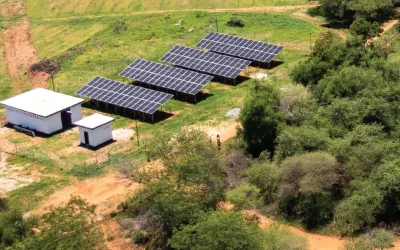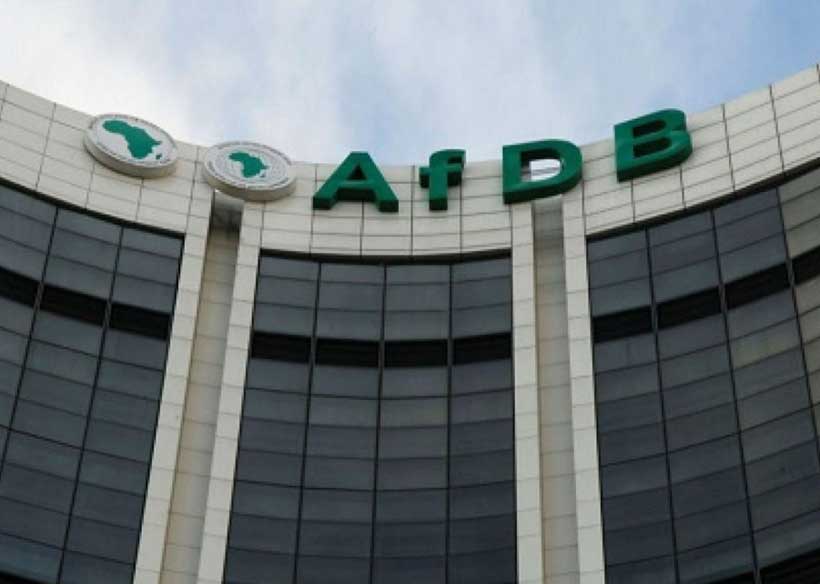Zim has a US$3,7 bn financing gap, Vision 2030 elusive — AfDB
Zimbabwe faces a daunting challenge in its quest to achieve Vision 2030, with the African Development Bank (AfDB) in its latest country report estimating a staggering annual financing gap of US$3,7 billion, equivalent to 13,4 percent of the country’s GDP.
This shortfall, the Bank warns, could severely undermine Zimbabwe’s ability to realise the structural transformation necessary to become an upper-middle-income country by 2030.
“The AfDB estimates that Zimbabwe has an estimated annual financing gap equivalent to 13,4 percent of GDP (US$3,7 billion) and 2,3 percent of GDP (US$660 million) to achieve the desired structural transformation by 2030 and 2063, respectively,” the report highlighted.
The AfDB’s grim assessment underscores the magnitude of the country’s financial needs and casts doubt on the ability to mobilise the required resources, particularly given the current debt situation.
Zimbabwe’s debt, which remains unsustainable and has been long outstanding, is a major impediment to unlocking new sources of financing.
“The magnitude of these estimated financing needs and gaps casts doubt on the ability of Zimbabwe to mobilise these financial resources. This is mainly because Zimbabwe remains in a peculiar situation owing to its long outstanding, unsustainable debt,” the report added.
Over the past decade, Zimbabwe has struggled with minimal economic transformation, with growth driven primarily by traditional sectors such as services, agriculture, mining, and industry.
However, the economy has not yet undergone the necessary shift toward higher-productivity, capital- and skill-intensive activities, a process known as structural transformation.
Structural transformation is vital for Zimbabwe’s future prosperity, yet recent trends show that labour in the country has been moving in the opposite direction.
The AfDB noted that over the last decade, labour has shifted from high-value-added industries like agriculture, industry, and high-productivity services to sectors with lower value-added, including wholesale and retail trade.
This shift has further hindered Zimbabwe’s ability to achieve its Vision 2030 goals.
“The prerequisite for Zimbabwe’s transformation is debt restructuring and clearance of arrears to create fiscal space, attract FDI, and unlock access to global financing opportunities,” the AfDB stressed.
Dr Nxaba Ndiweni, an industrialist, echoed AfDB’s concerns, pointing out that without addressing the debt burden, Zimbabwe’s aspirations for Vision 2030 would remain out of reach.
“Zimbabwe’s economic growth has been stifled by its debt crisis. Restructuring this debt is not just an option, it is a necessity if we are to create the fiscal space needed for meaningful investments in high-productivity sectors.”
The country’s economic stagnation is further evidenced by its labour productivity growth, which remains among the lowest in Sub-Saharan Africa. Despite Zimbabwe’s transition from a low-income to a lower-middle-income country in 2019, its productivity gains have been insufficient to drive the desired economic transformation.
The country’s vision to become an upper-middle-income country by 2030 is ambitious, but the current economic trajectory raises questions about the feasibility of this goal. Economic growth over the past four decades has consistently fallen short of the levels required to achieve the Vision 2030 targets.
“The development results achieved have been sub-optimal and insufficient to spur the economy to expected levels of sustainable economic development owing to both exogenous and endogenous factors, including deterioration of terms of trade and impacts of climate change,” the AfDB report stated.
Economist Dr Abel Chihwa emphasised the critical role that debt restructuring plays in achieving sustainable development.
“Debt resolution is key if Zimbabwe is to meet its Vision 2030 goals. Without restructuring, the country will continue to face significant fiscal constraints that limit its ability to invest in the infrastructure and human capital needed for structural transformation.”
Despite the challenges, the AfDB report also identifies opportunities that Zimbabwe could leverage to accelerate its structural transformation.
One such opportunity lies in the Africa Continental Free Trade Area Agreement (AfCFTA), which could serve as a catalyst for Zimbabwe’s economic transformation, given the country’s strategic location in Southern Africa.
“The AfCFTA could offer an opportunity to Zimbabwe to fast-track structural transformation and propel the country towards the achievement of Vision 2030. Zimbabwe is now pursuing outward-oriented policies to take advantage of the AfCFTA,” the AfDB noted.
Economist Dr Prosper Chitambara weighed in on this potential, suggesting that the AfCFTA could indeed provide the boost Zimbabwe needs to overcome some of its structural challenges.
“The AfCFTA presents a unique opportunity for Zimbabwe to integrate more deeply into regional and global value chains. Through aligning its policies with AfCFTA’s objectives, Zimbabwe can attract more investment and increase its exports, which are essential for closing the financing gap,” said Dr Chitambara.
While Zimbabwe faces significant financial and structural hurdles on its path to achieving Vision 2030, the AfDB report underscores the importance of debt restructuring and strategic policy alignment with regional opportunities like the AfCFTA.
Addressing these issues head-on are viewed as crucial if Zimbabwe is to realise its vision and unlock its economic potential. However, without immediate action, the financing gap may remain a formidable barrier, leaving the country’s aspirations in jeopardy.-ebsinessweekl








